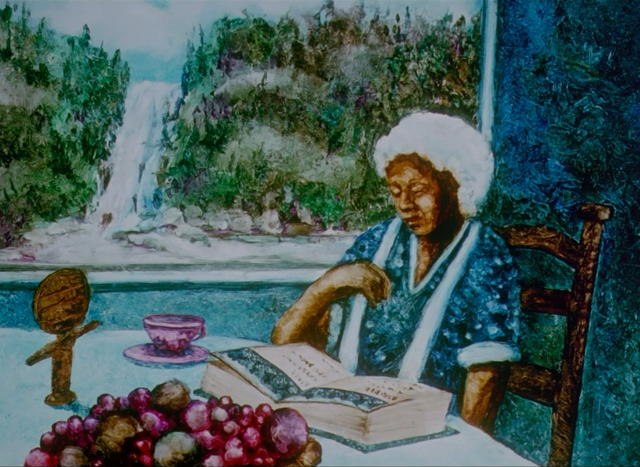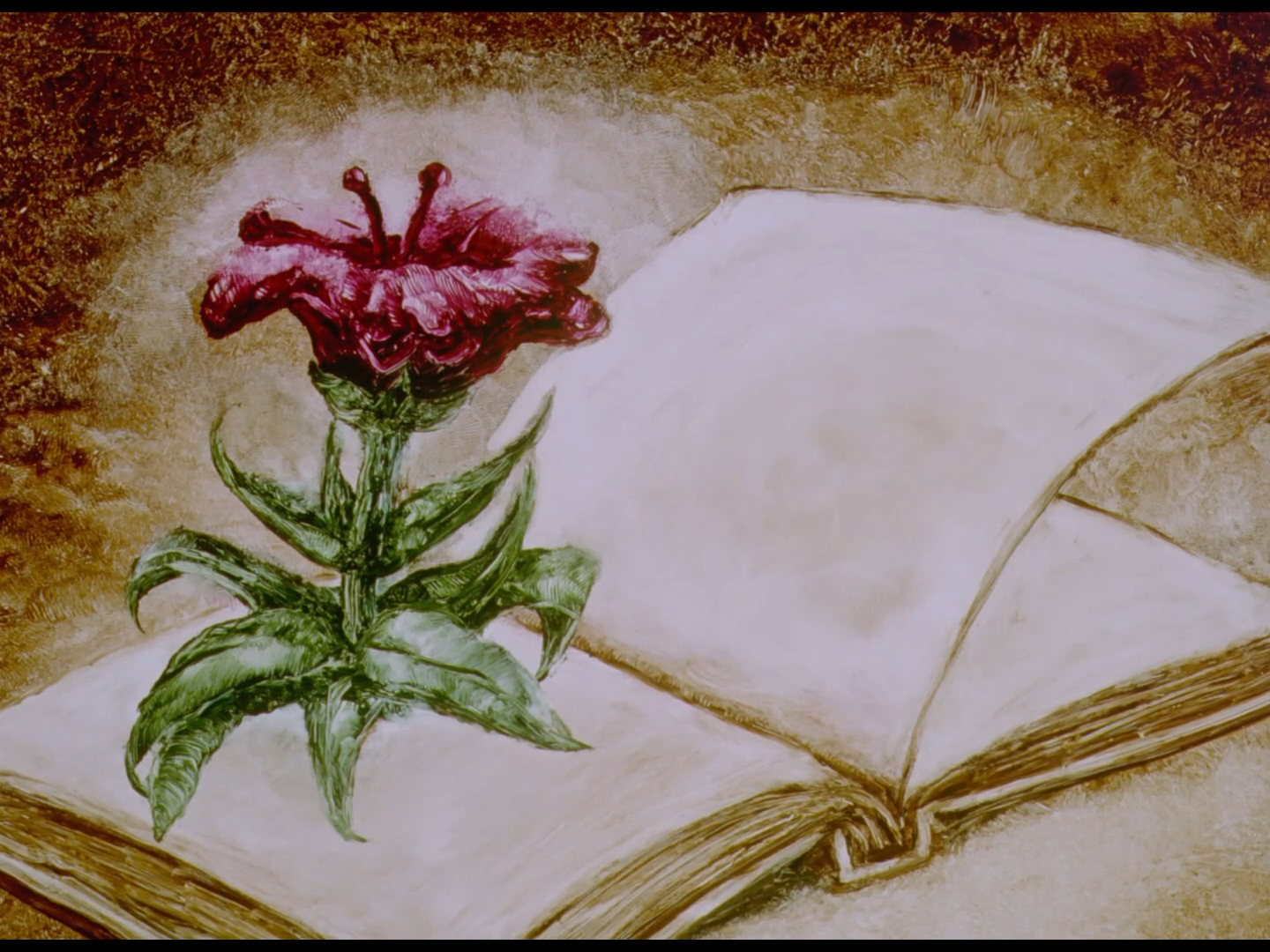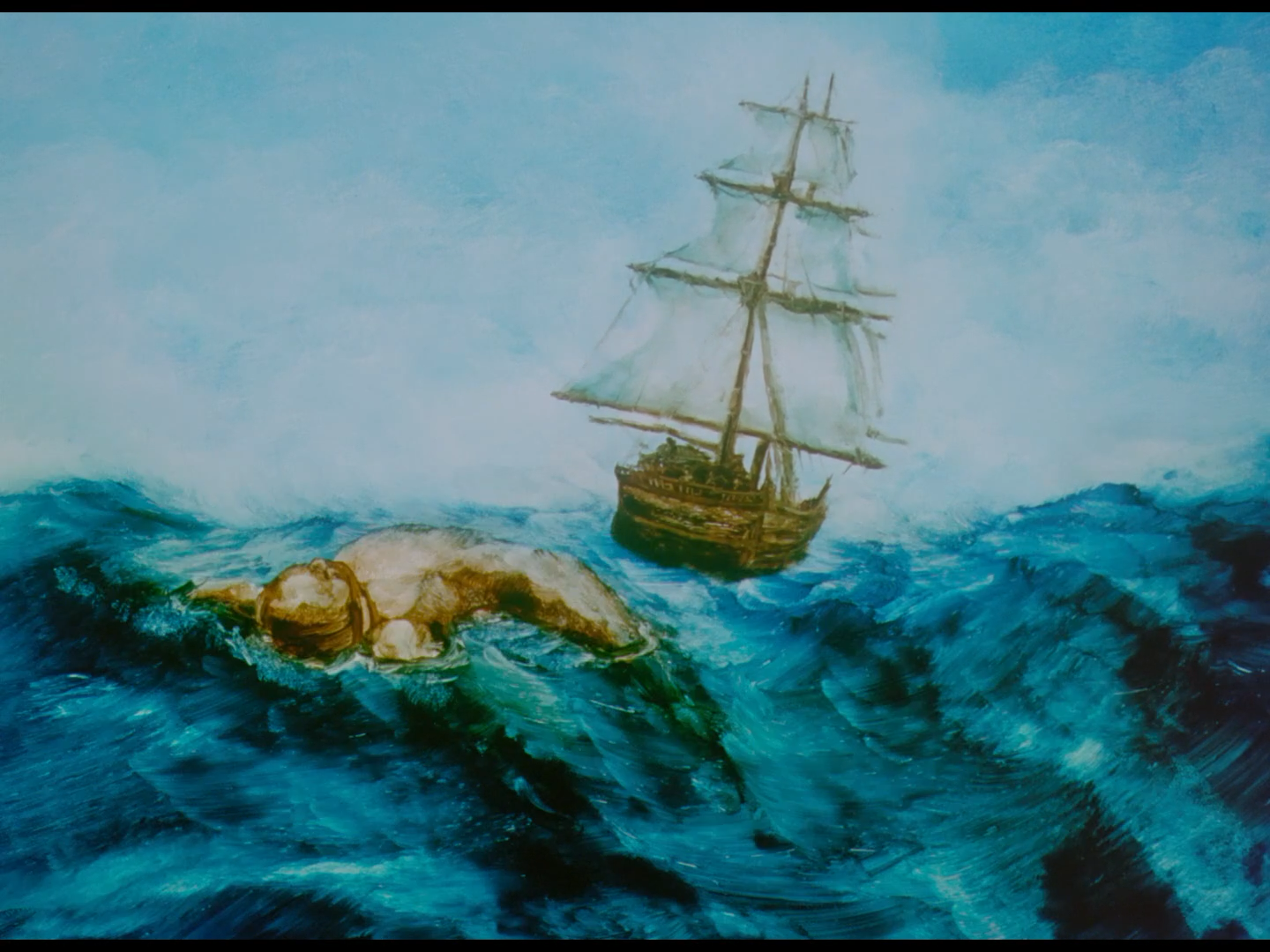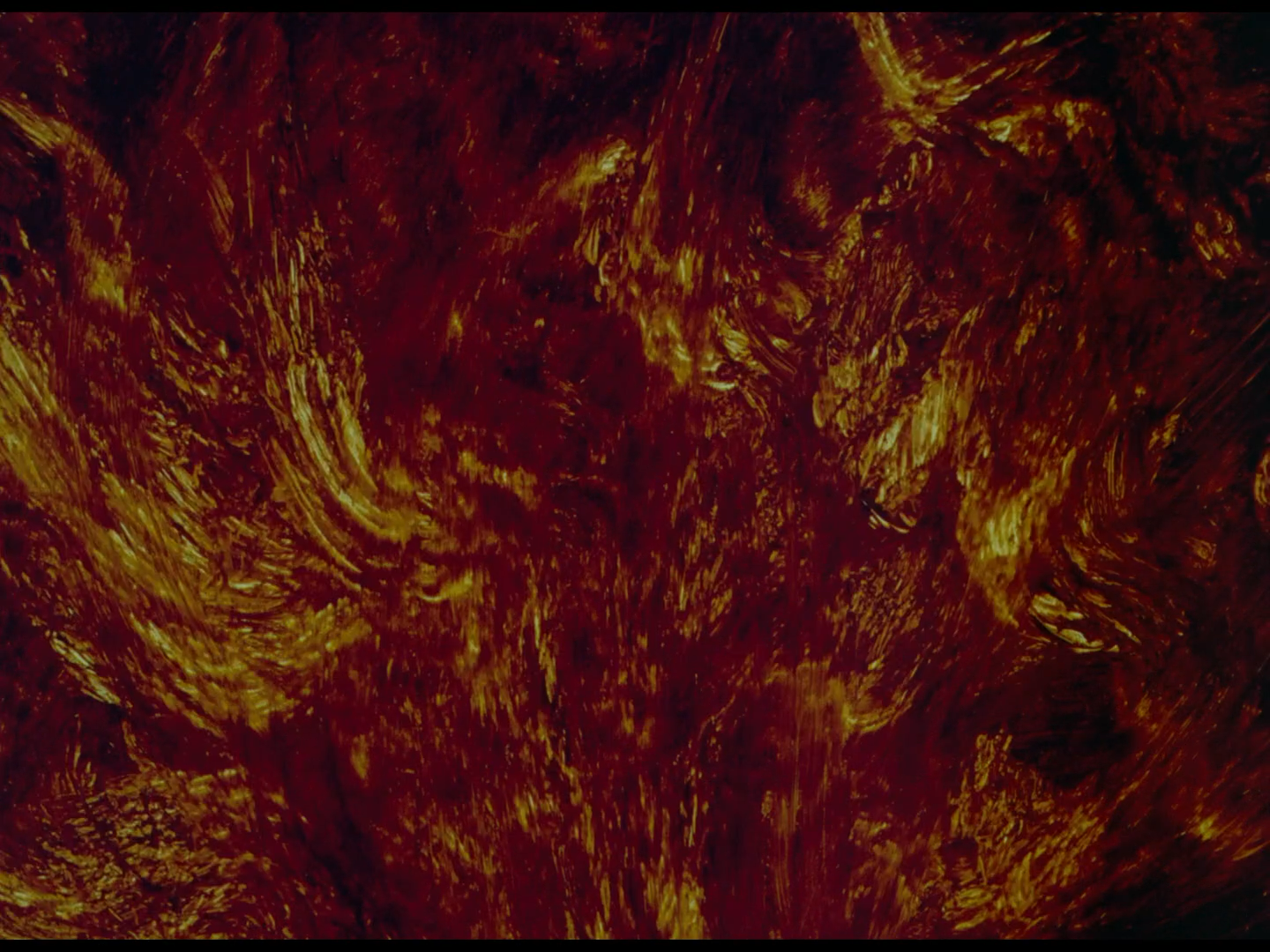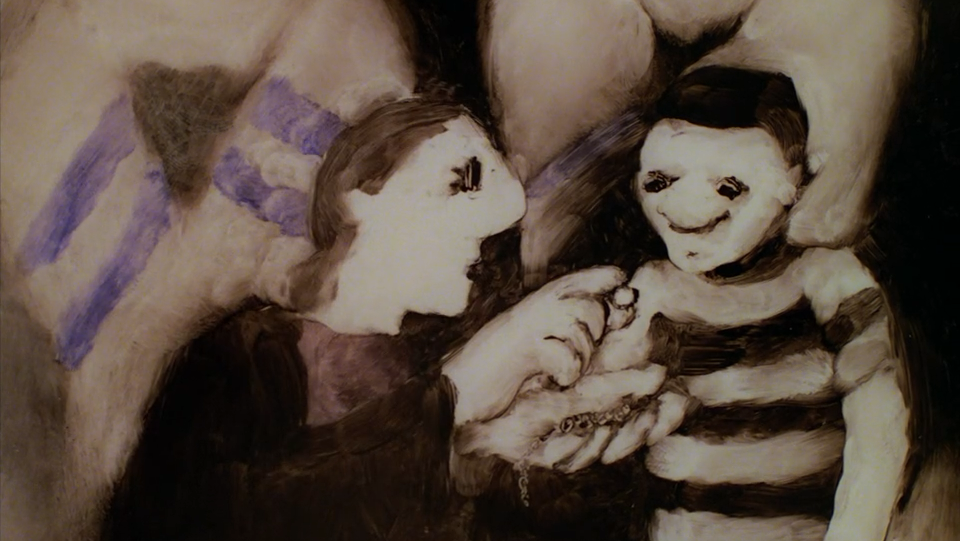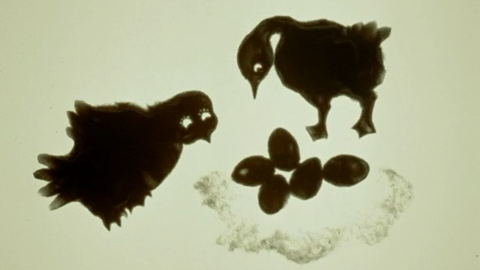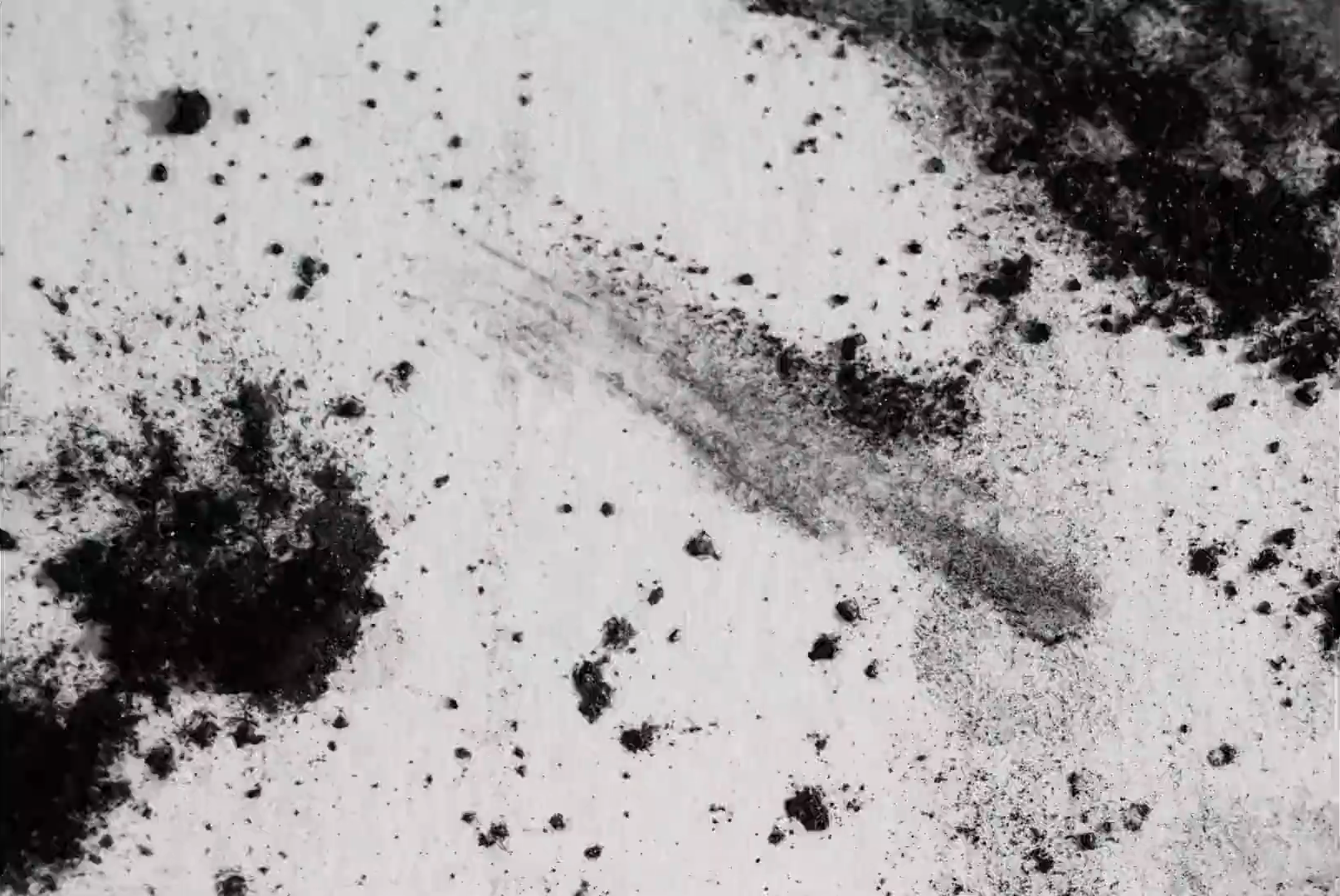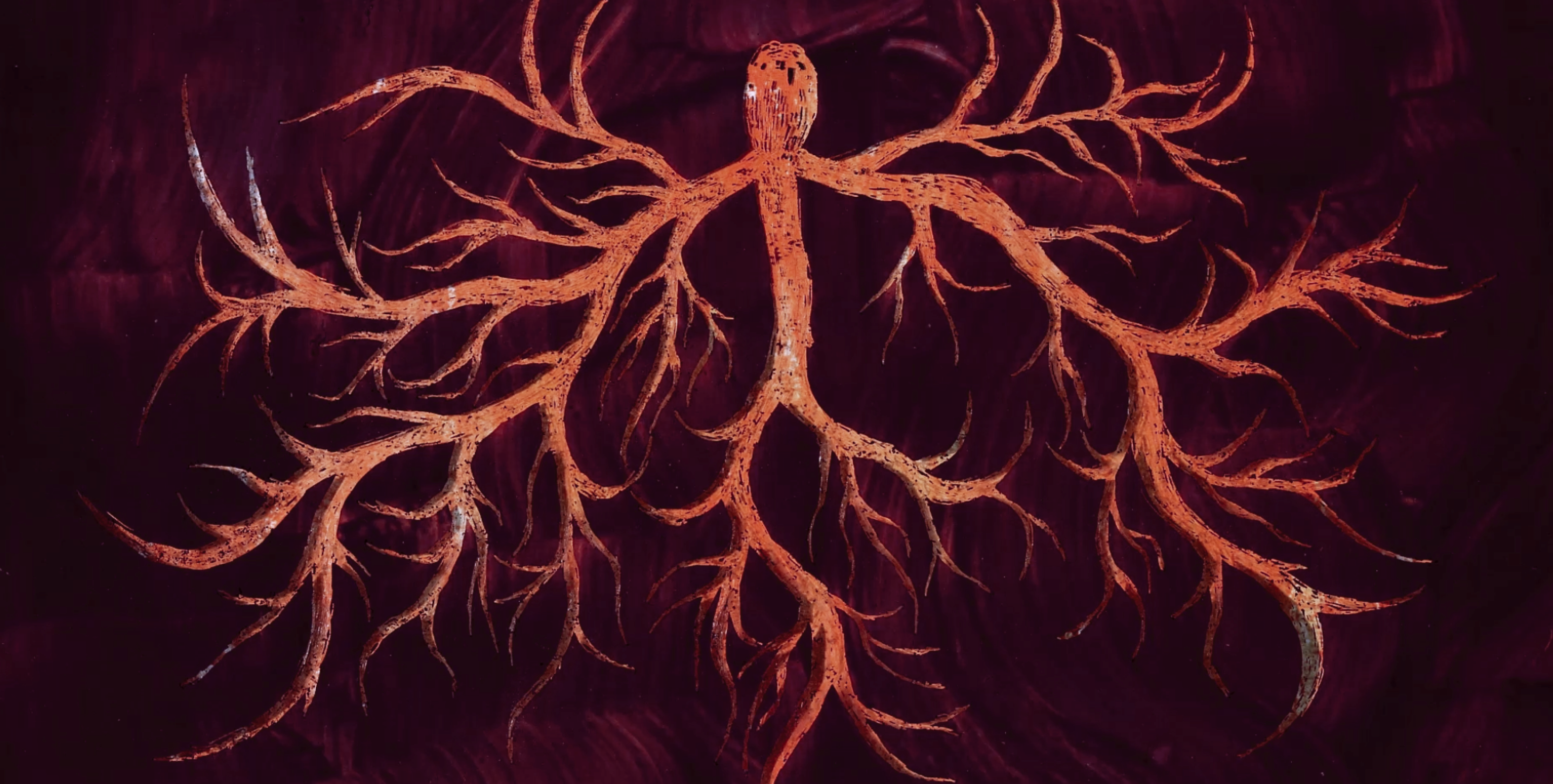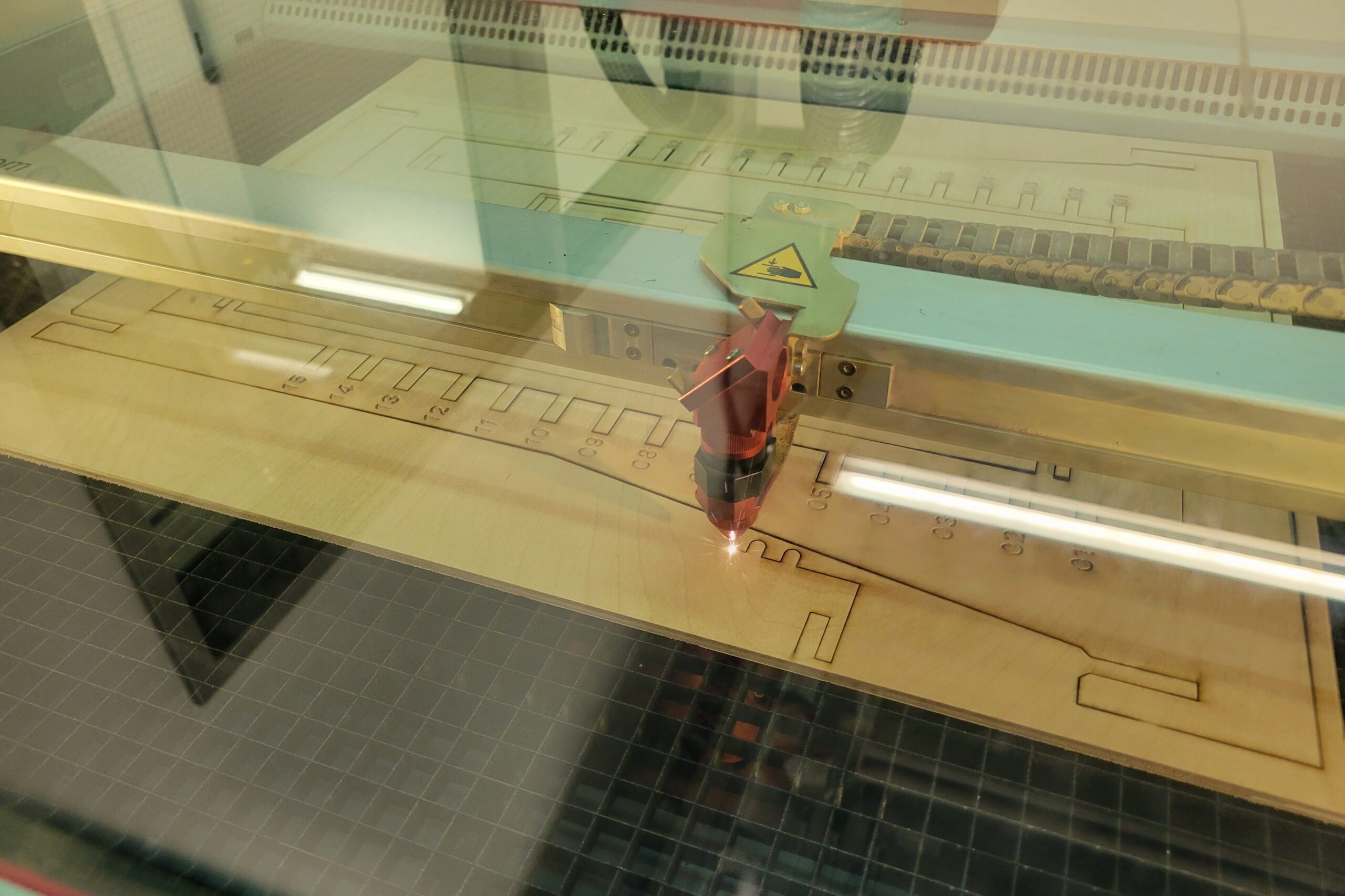Notes on the film
Black Soul is a time-travelling portrait of Canadian Black history, unfolding as a series of stories passed from a grandmother to her grandson. Visually blending images of enslavement, resistance, and emancipation, the film grapples with how Black identity and cultural expression remain entangled with the legacy of colonialism. Haitian-Canadian filmmaker Martine Chartrand animates using oil paint on glass, carefully erasing and repainting each frame by hand. The resulting fluid movement retains the texture of wet pigment manipulated with the artist’s fingers. As Chartrand has articulated, “a significant part of the emotive force is generated by the fingerprints.” The artist embeds her physical presence into the historical scenes depicted on screen, as visible traces of her fingers animate the subtle boil of shifting paint.
in every element of the composition, traces of the artist can be found
Black Soul recounts Black histories typically excluded from Canadian national and cultural narratives. The film’s child protagonist receives these histories in the form of stories told by his grandmother. In vivid sequences, he is transported across time and space: from the vibrance of ancient African kingdoms to the ships of the transatlantic trade; from Caribbean plantations to modern civil rights movements, and finally to Montreal’s Little Burgundy—a historically Black neighborhood known for its jazz culture. A cohesive temporal structure is established through color: saturated hues for the present, and predominantly earthy monochromes for the past. Yet the timelines also intersect, as motifs like sugar cubes and coffee become reminders of how histories of extraction and displacement continue to shape and inform the present.
a sugar cube links present comfort to a past shaped by labour and exploitation
The film’s visual style, inspired by the paint-on-glass technique of artist Alexander Petrov, embraces metamorphosis and gestural abstraction. Chartrand allows the paint’s fluidity to erupt during emotionally charged moments, such as enslaved captives transforming into free birds, or a killed rebel woman’s body fading into a dissipating candle. Some of the most visceral scenes, however, confront the violence of enslavement directly: the branding of a man, the echo of chains, the quiet resistance of an African woman who sets her village aflame rather than submit to oppression. These scenes are valorised in their emotional intensity, depicting pain through realism rather than abstraction, making them all the more striking and affecting.
Complementing the film’s vivid visuals is its textured sound design. African chants, the archival echo of Martin Luther King Jr.’s “I Have a Dream” speech, and a vibrant jazz score by Oliver Jones and Lilison Cordeiro coalesce to create a layered sensory experience. Colour amplifies the music’s emotional register: fiery reds channel rage, desaturated browns evoke oppression, and rich blues bring in the rhythm of jazz. In more solemn moments of suffering, however, the soundtrack is pared down– leaving space for the diegetic sounds of trade coins, clanking chains, or the silence of a body floating on the surface of the Atlantic ocean. The film returns from these memories to a library filled with books by diasporic Black writers, one of which cites a poem by Jacques Roumain: “Africa, I Have Kept Your Memory.” In a powerful visual metaphor of inherited identity, the child protagonist enters its pages to walk through ancestral memory.
Interview with Martine Chartrand
In this interview clip, director Martine Chartrand discusses her production process, the significance of Black history as a central subject, and her use of the paint-on-glass technique.
Interview with Martine ChartrandChartrand’s graduate thesis (in French)
Chartrand’s research on Black history– particularly its erasure from archives in Quebec and Canada, that deeply informed some of her artistic works including Black Soul.
Read Here